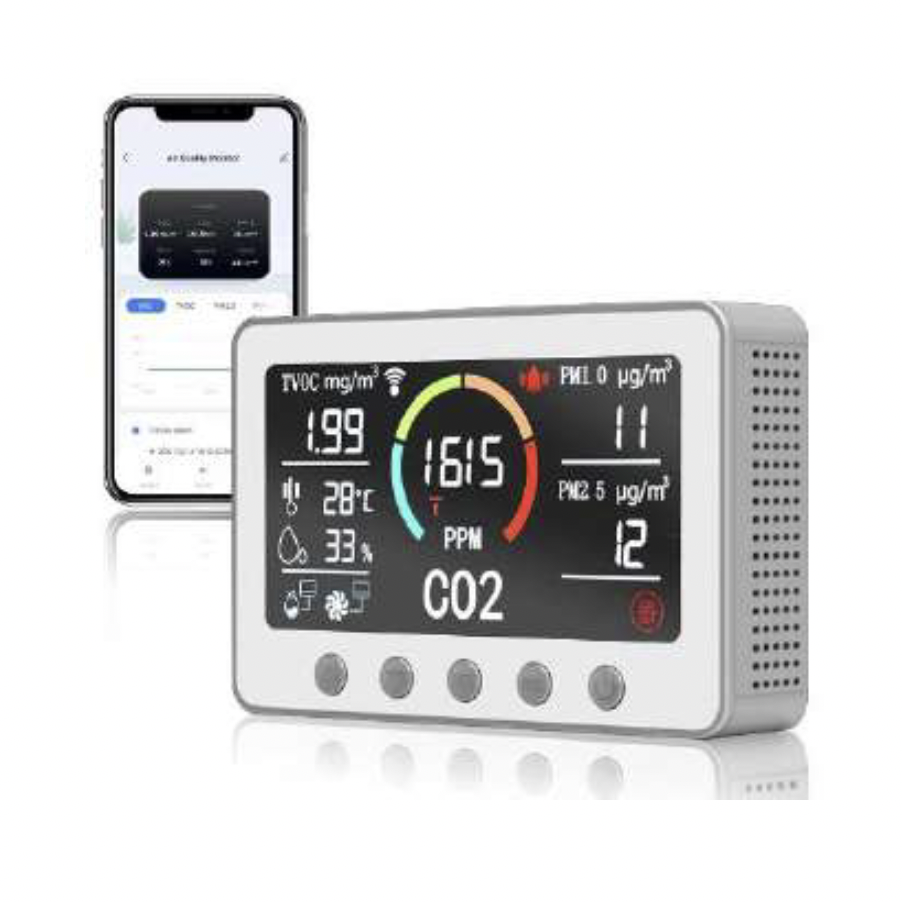Our solutions
Healthy Buildings
Healthy buildings refer to structures designed, constructed, and operated with the well-being and health of occupants as a primary consideration.
Healthy buildings are crafted to promote physical, mental, as well as social well-being while minimising negative impacts on the environment. At Anglo Nordic we offer a range of products and solutions designed to promote a healthy building.
The nine foundations of a healthy building
At Anglo Nordic we offer solutions for seven of the foundations. Just hover over the boxes to find out more.

Thermal
Health
Maintaining indoor temperatures within a comfortable and healthy range to promote physical comfort and well-being.
Find out more
Air
Quality
Controlling indoor air pollutants such as particulate matter, to ensure clean and healthy air for occupants.
Find out more
Lighting &
Views
Providing access to natural light and outside views to help mental well-being, and overall occupant satisfaction and productivity.
Find out more
Moisture
Management
Controlling humidity levels and preventing moisture intrusion to mitigate the risk of mould growth and indoor air quality problems.
Find out more
Water
Quality
Monitoring and maintaining clean and safe water to prevent contamination and protect occupants from waterborne illnesses.
Find out more
Building
Ventilation
Providing high-quality outdoor air circulation to dilute indoor pollutants and maintain a comfortable and healthy environment.
Find out more
Noise
Control
Implementing strategies to minimise noise pollution, which can impact occupant comfort, productivity, and overall well-being.
Find out moreHealthy Buildings
Thermal Health
Healthy buildings maintain comfortable indoor temperatures and humidity levels, ensuring occupants feel neither too hot nor too cold.
Thermal health refers to maintaining indoor temperatures within a comfortable and healthy range to promote physical comfort and overall well-being. Several key components contribute to thermal health within a building. Just click on the heading to find out more:
These systems regulate the indoor temperature to ensure it remains within a comfortable range for occupants. Heating, ventilation, and air conditioning (HVAC) systems are commonly used to achieve this.
Proper insulation helps maintain consistent indoor temperatures by preventing heat loss in cold weather and heat gain in hot weather. Insulation materials are installed in walls, ceilings, and floors to improve energy efficiency and thermal comfort.
Good air circulation is essential for distributing heated or cooled air evenly throughout a building. Adequate ventilation systems help prevent stagnant air and maintain a comfortable indoor environment.
Proper humidity levels are important for thermal comfort. High humidity can make indoor spaces feel warmer than they actually are, while low humidity can lead to dryness and discomfort. HVAC systems often include features for controlling humidity levels.
Materials with high thermal mass, such as concrete or brick, can absorb and store heat, helping to stabilise indoor temperatures. Incorporating thermal mass into building design can contribute to thermal comfort and energy efficiency.
Windows play a significant role in regulating indoor temperatures. Energy-efficient glazing and window treatments help minimize heat transfer, reducing the need for heating and cooling.
Individual preferences for temperature can vary, so allowing occupants some control over their immediate environment, such as adjustable thermostats or personal fans, can contribute to overall thermal comfort.
Building design factors such as orientation, shading, and landscaping can also impact thermal health by influencing solar heat gain and natural ventilation.
Healthy Buildings
Air Quality
Healthy buildings control indoor air pollutants such as particulate matter, volatile organic compounds (VOCs), and other contaminants to ensure clean and healthy air for occupants.
At Anglo Nordic we offer a range of solutions to improve the quality of air in buildings. These include air filtration systems, such as HVAC filters, that help capture particulate matter, dust, pollen, and other airborne contaminants, preventing them from circulating in the indoor air. As well as smart air quality monitoring systems.

Healthy Buildings
Lighting and Views
Healthy buildings incorporate ample natural light and light bulb technology that protects.
Natural light is a fundamental consideration for a healthy building, but our products help improve the health of occupants further. Our light bulbs are, well, smart. They eliminate a range of pollutants thanks to their scientific development and design.
Healthy Buildings
Moisture Management
Healthy buildings control humidity levels and prevent moisture intrusion to mitigate the risk of mold growth and indoor air quality problems.
There are a number of component parts to an effective approach to moisture management. Just click on the relevant headings to find out more about each one.
Condensation occurs when warm, moist air comes into contact with cooler surfaces, leading to water vapour turning into liquid water. Condensation can promote mould growth and cause structural damage. Proper insulation, vapour barriers, and adequate ventilation help prevent condensation from occurring.
Maintaining optimal relative humidity levels (typically between 30% and 60%) is essential for occupant comfort and health. High humidity levels can foster mould and mildew growth, while low humidity can lead to discomfort and respiratory issues. HVAC systems, dehumidifiers, and moisture-absorbing materials help regulate indoor humidity levels.
Effective building envelope design and maintenance are crucial for preventing water intrusion from rain, snow, or plumbing leaks. Properly sealed windows, doors, and roofs, along with adequate drainage systems, help keep moisture out of the building.
Activities such as cooking, bathing, and laundry generate moisture indoors. Proper ventilation in kitchens, bathrooms, and laundry areas helps remove excess moisture and prevent it from accumulating in the building.
Choosing building materials that are resistant to moisture damage helps prevent mould growth and structural deterioration. Moisture-resistant paints, coatings, and sealants are commonly used in areas prone to moisture exposure.
Any signs of water damage, such as leaks, stains, or musty odours, should be promptly investigated and repaired to prevent further moisture-related issues and mould growth.
Regular inspection and maintenance of building systems, including HVAC, plumbing, and roofing, are essential for identifying and addressing moisture-related problems promptly. Monitoring indoor humidity levels and moisture content in building materials helps ensure that moisture levels remain within acceptable limits.
Healthy Buildings
Water Quality
Healthy buildings monitor and maintain clean and safe water sources to prevent contamination and protect occupants from waterborne illnesses and other health hazards.
Maintaining high water quality standards is essential for protecting the health and well-being of building occupants. Here are some key aspects of water quality management in healthy buildings:
Healthy Buildings
Building Ventilation
Healthy buildings provide high-quality outdoor air circulation to dilute indoor pollutants and maintain a comfortable and healthy environment.
Effective ventilation is crucial for promoting the health, well-being, and productivity of building occupants. Here are some key aspects of building ventilation in healthy buildings:
Ventilation systems bring in outdoor air to replace indoor air, ensuring a constant supply of fresh, oxygen-rich air. This helps dilute indoor pollutants, such as carbon dioxide (CO2), volatile organic compounds (VOCs), and odors, and provides occupants with a comfortable and healthy indoor environment.
Once outdoor air is brought into the building, it needs to be distributed evenly throughout the indoor spaces. HVAC (Heating, Ventilation, and Air Conditioning) systems, ductwork, vents, and diffusers help circulate the air efficiently to ensure uniform ventilation and maintain consistent indoor air quality.
Exhaust ventilation systems remove stale air, moisture, and pollutants from indoor spaces and expel them outdoors. Exhaust fans are commonly used in areas prone to high humidity, such as kitchens, bathrooms, and laundry rooms, as well as in industrial settings to remove fumes and contaminants generated during manufacturing processes.
Ventilation systems play a crucial role in controlling indoor air pollutants by diluting and removing contaminants from the indoor air. Proper ventilation helps reduce the buildup of allergens, mould spores, dust, and other harmful substances that can adversely affect occupants’ health.
In addition to supplying fresh air and removing pollutants, ventilation systems also help regulate indoor temperature and humidity levels. Proper ventilation helps prevent overheating, excessive moisture buildup, and condensation, which can lead to mould growth and indoor air quality problems.
In areas with high levels of outdoor air pollution, such as urban environments or industrial zones, special considerations may be needed to ensure that outdoor air brought into the building is adequately filtered and treated to remove pollutants before being circulated indoors.
Healthy Buildings
Noise Control
Healthy buildings Implement strategies to minimise noise pollution within the building environment, which can impact occupant comfort, productivity, and overall well-being.
Effective noise control is essential for creating a comfortable and productive atmosphere for building occupants. Here are some key aspects of noise control in healthy buildings:
So why not talk to us about our solutions for Healthy Buildings
If you’d like to find out more about our approach and experience in creating healthy buildings please do get in touch.
